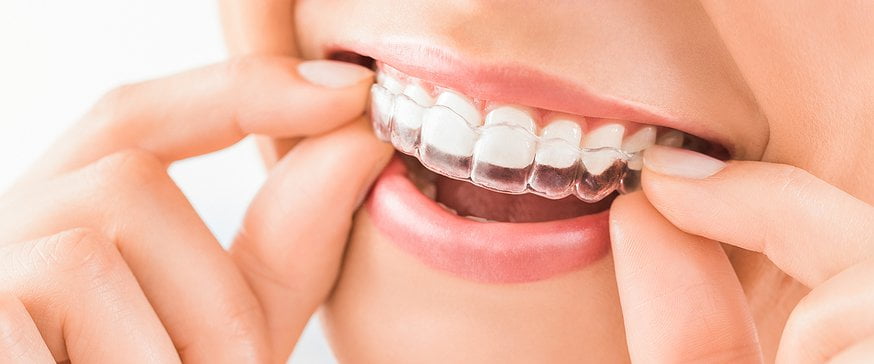About Legacy Orthodontics
About Legacy Orthodontics
Blog Article
7 Easy Facts About Legacy Orthodontics Shown
Table of ContentsThe Single Strategy To Use For Legacy OrthodonticsA Biased View of Legacy OrthodonticsThe Greatest Guide To Legacy OrthodonticsSome Known Questions About Legacy Orthodontics.What Does Legacy Orthodontics Mean?
In addition, we supply flexible treatment timetables, adaptable payment options and an enjoyable, enjoyable experience.An orthodontist is a dental practitioner trained to detect, avoid, and deal with teeth and jaw irregularities. Orthodontists function with individuals of all ages, from youngsters to adults.
Malocclusion, or misaligned teeth, can cause oral issues, consisting of dental caries, periodontal disease, and challenging or uncomfortable chewing. However not everyone is born with straight teeth. If you have a negative bite or large areas in between your teeth, you might intend to consult a dental practitioner specializing in orthodontic care.
5 Easy Facts About Legacy Orthodontics Described
( Photo Credit Rating: DigitalVision/Getty Images) Orthodontists make use of fixed and removable dental devices, like braces, retainers, and bands, to change the position of teeth in your mouth. Orthodontic treatment is for dental problems, consisting of: Jagged teethBite issues, like an overbite or an underbiteCrowded teeth or teeth that are as well far apartJaw misalignmentThe objective of orthodontic treatment is to enhance your bite.
While you might think of orthodontists as mainly for children or young adults that need dental braces, they can correct dental problems at any age. Orthodontists participate in college, dental school, and orthodontic institution.
All orthodontists are dental experts, but not all dental professionals are orthodontists. Orthodontic residency programs offer intensive, focused instruction for dental professionals. They concentrate on two areas: Just how to effectively and securely move teeth How to properly assist advancement in the teeth, jaw, and faceOnce an orthodontist has finished training, they have the alternative to become board licensed.
See This Report about Legacy Orthodontics
Imbalance, or malocclusion, is one of the most usual reason individuals see an orthodontist. It is hereditary and is the outcome of dimension differences between the top and reduced jaw or between the jaw and teeth. Malocclusion causes tooth congestion, an irregular jaw, or uneven bite patterns. Malocclusion is generally treated with: Your orthodontist affixes metal, ceramic, or plastic square bonds to your teeth.
If you have only small malocclusion, you might have the ability to make use of clear braces, called aligners, rather than typical dental braces (https://my-store-ffecfa.creator-spring.com/). Some people need a headwear to assist relocate teeth right into line with stress from outside the mouth. After braces or aligners, you'll require to use a retainer. A retainer is a custom device that maintains your teeth in location.
They're most often utilized on children. They can develop added room in the mouth without official site having to pull teeth. If you have a significant underbite or overbite, you might need orthognathic surgical treatment (additionally called orthodontic surgery) to lengthen or shorten your jaw. Orthodontists utilize cables, medical screws, or plates to sustain your jaw bone.
You may need to see an orthodontist if you have: Crowding or otherwise sufficient space for all of your teethOverbite, when your upper teeth come over your base teethUnderbite, when your base teeth are also much forwardSpacing or issues with gapsCrossbite, which is when your upper teeth fit behind your base teeth when your mouth is closedOpen bite or an upright void in between your front base and top teethMisplaced midline, when the center of your bottom and top teeth do not align Correcting a dental malocclusion can: Make biting, eating, and talking easierImprove the balance of our face and your general appearanceEase discomfort from temporomandibular joint conditionsDifferent your teeth and make them less complicated to clean up, assisting stop dental cavity or dental caries It's typically a dental expert who first notices misaligned teeth throughout a regular test.
Legacy Orthodontics Fundamentals Explained

During your initial orthodontic consultation, you'll likely have: An oral examPhotos taken of your face and smileDental X-raysPanoramic (360 degree) X-rays of your face and headImpressions to create molds of your teethThese tests will certainly help your orthodontist know how to proceed with your treatment. orthodontist. An orthodontist is a dental practitioner that's had training to treat your teeth and jaw
Orthodontists may do surgical procedure, exams,X-rays,and more to aid you achieve a much more comfy, healthier smile. An orthodontist is concentrated on your bite, so something like a broken tooth would certainly be handled by a dental practitioner. Orthodontists are dentists but not all dental professionals are orthodontists. Orthodontists are concentrated on your bite, or the means your teeth meshed, and the straightness of your teeth.
Ever asked yourself exactly how celebs always appear to have completely aligned teeth? Orthodontists are dental professionals that focus on fixing irregularities in the teeth and jaws.
The Best Guide To Legacy Orthodontics

While dental braces are the most commonly acknowledged orthodontic treatment, orthodontists have a varied toolkit at their disposal. The certain strategy selected depends on the seriousness of the situation, the individual's age, and specific choices. These reliable dental braces make use of a system of brackets bonded to the teeth and linked by cords.
Clear aligners, like Invisalign, are a prominent alternative for individuals looking for a more discreet therapy alternative. These detachable trays are custom-made to progressively shift the teeth's position. Headgear might be used along with braces or aligners to apply additional targeted forces, particularly for fixing jaw discrepancies. In cases of narrow jaws, palatal expanders can be used to create space for correct tooth placement.
Report this page